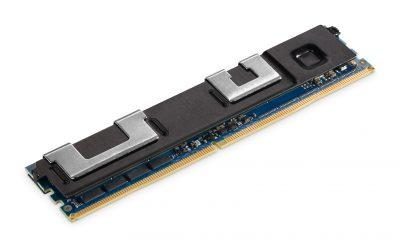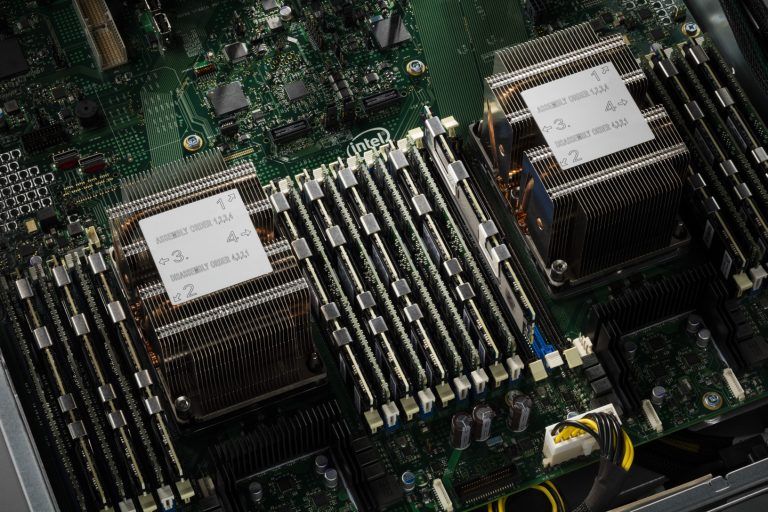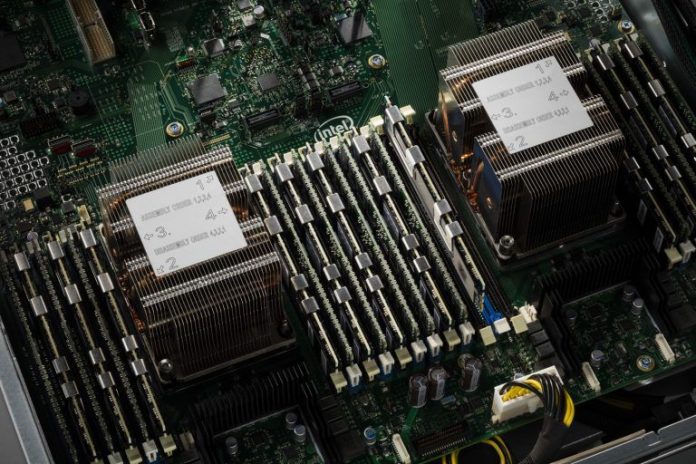At the SAP Sapphire conference, Intel is showing off two of its next-generation products: the Intel Xeon Scalable Family and 3D XPoint DIMMs. In an official blog post accompanying the show, Intel touts its 3D XPoint as a game-changer for SAP HANA. In the same release, we also spotted the platform for 3D XPoint DIMMs, Cascade Lake (or a Skylake-SP development platform.)
SAP HANA and 3D XPoint

For those who are not familiar, SAP HANA is an in-memory analytics engine that has become extremely popular. One of the most common architectures for SAP HANA is using four (or more) socket Intel Xeon E7 series processors (e.g. the Dell PowerEdge R930 or Supermicro 804B-TR4FT we reviewed.) The reason for this is clear, each Intel Xeon E7 series CPU can handle more RAM than its E5 counterpart and the E7 series can scale beyond 4 sockets. When you are looking to do in-memory analytics on very large datasets, companies often look to get as much RAM as possible.
A major challenge with RAM is that it is volatile. As a result, if the machines ever need to reboot, data in RAM can be lost if not flushed properly. The new Intel 3D XPoint technology combines faster than NAND performance, higher write endurance (than NAND), larger capacity (than DRAM) and is non-volatile (unlike DRAM but like NAND.) In short, it is a great fit for in-memory analytics.
While we have the Intel DC P4800X, and the performance is great, where Intel is looking to these days is as augmenting RAM capacity. Specifically with persistent, high capacity storage. For the SAP HANA world, this is going to be game changing as it will allow companies to increase memory sizes in DRAM sockets. It also minimizes load times of large datasets after reboots.
A Look at the Platform
Intel also showed off a system photo of the 3D XPoint system. As you can see, the heatsinks follow a mounting pattern similar to the sockets for the Intel Xeon Phi x200 / Skylake-SP. While Intel Xeon E5 V1-V4 systems generally used hard mounting points at four corners (see the Lenovo x3550 M5 review for an example), the newer, larger sockets require six retention points including two pins and are much larger.

If you want to see more about the coming retention mechanism from the similarly configured Intel Xeon Phi x200 family (slightly different than Skylake-SP but still similar), check out our video.
Simply counting the DIMM slots we also see 12 DIMMs per socket and the alternating blue and black lets us know that these are next-generation parts.
That picture is likely one of the first Intel Cascade Lake platforms or a Skylake-SP development platform. Intel states that the 3D XPoint DIMM form factor is coming “in 2018 with a processor refresh of the Intel Xeon Scalable family platform, code-named Cascade Lake.” (Source: Intel)
Final Words
We expect that using NVMe, Optane and other storage for augmenting data analytics in a persistent memory tier is going to explode in the next 24 months. We are already seeing examples of this with companies we advise. This is one of those rare Intel releases where we get two nuggets: a look at a future memory technology running a targeted workload and a non-GA platform running that technology. For STH readers, keep an eye on this segment as it is one where we are going to see game-changing breakthroughs in performance.




